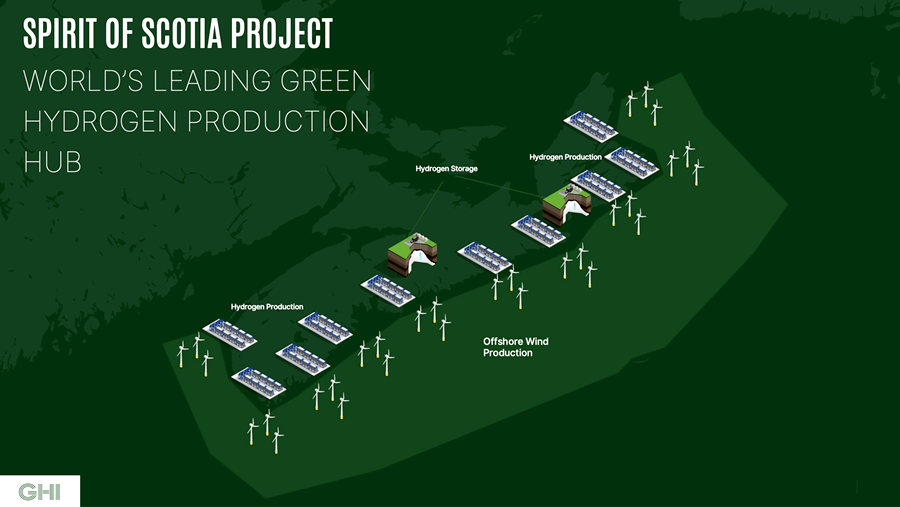New Canadian export projects unveiled
By Julian Atchison on September 14, 2022
In the wake of the new Canada – Germany alliance for hydrogen exports, four significant production projects were announced last month.
Port of Belledune, New Brunswick

The Belledune Port Authority (BPA) and Cross River Infrastructure Partners will develop a renewable hydrogen and ammonia production facility at the northeast Canadian port. 200MW of “clean, firm power” generation will be used to produce ammonia for exports & fuel applications, with expansion already planned to increase production capacity. The partners are targeting 2027 for commercial operations to come online.
Belledune is an established year-round port with easy access to the key European Union and North American markets we’re targeting. With most of the required infrastructure already in place, including a critical source of existing clean energy and substantial existing transmission to power our operations, we view this as a significant opportunity for everyone involved.
MD of Cross River Infrastructure Partners Rishi Jain in BPA’s official press release, 18 Aug 2022
PBA has also signed an agreement with Niedersachsen Ports GmbH, which oversees operations at Wilhelmshaven port in Germany. The agreement creates a direct trade corridor between the two locations, with Wilhelmshaven set to transform into an ammonia import hub.
Newfoundland: Project Lynx & Project Nujio’Qonik
Newfoundland’s grid is dominated by hydro, accounting for 96% of generated electricity. And although Newfoundland has a huge amount of untapped onshore wind potential, a moratorium on onshore wind development was only lifted earlier this year. That decision has paved the way for two renewable ammonia production projects, which have been proposed for the southwest corner of the island.
Project Nujio’Qonik is being developed by local organisation World Energy GH2. The registration lodged with Newfoundland’s Department of Environment and Climate Change indicates that 1 GW of onshore wind turbines on the Port au Port Peninsula will power a 500 MW electrolysis facility at the Port of Stephenville, which also features interconnections to the grid, onsite gas turbines (“fueled primarily by hydrogen”) and a plant that produces 100,000 tonnes per year of renewable ammonia. Two expansion phases of the same size would triple the output, with further wind turbine installations to occur north and south of the project location.
Project Lynx is being developed by Fortescue Future Industries. Located somewhere in the southwest corner of Newfoundland, two “600 MW green ammonia production trains” will be built at a production facility, powered by 2 GW of onshore wind. But where World Energy anticipates that their production facility will operate 50% of the time, FFI is planning for grid interconnections to provide power to their facility on a more regular basis, driving production of between 700,000 to 900,000 tonnes of ammonia each year. Both World Energy and FFI have engaged local First Nations communities from the early stages of project planning, with FFI and Miawpukek First Nation signing an MoU in August to work together on Project Lynx.
The “Spirit of Scotia”
And Green Hydrogen International have unveiled the Spirit of Scotia: a sprawling, multi-site, GW-scale renewable hydrogen project spread across the island of Nova Scotia. Based on the acquisition of rights to multiple underground salt caverns for hydrogen storage, the Spirit of Scotia could be as large as 500 GW in capacity, producing 43 million tonnes of renewable hydrogen each year. The project is based on offshore wind, with the Atlantic waters off Nova Scotia possessing enormous potential for wind power generation.
